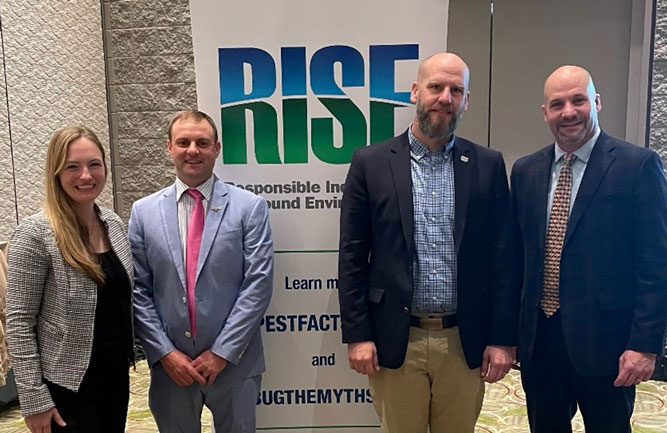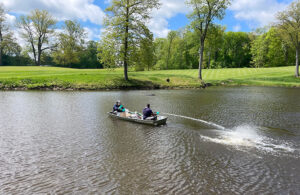Bayer, RISE respond to EPA imidacloprid assesment
As reported by Golfdom on Jan. 11, the U.S. EPA revealed a preliminary pollinator risk assessment on Jan. 6 for the neonicotinoid insecticide imidacloprid. The EPA’s assessment, prepared in collaboration with California’s Department of Pesticide Regulation, indicates that imidacloprid potentially poses risk to hives when the pesticide comes in contact with certain crops that attract pollinators.
Bayer CropScience, which is considered to be the primary manufacturer of imidacloprid, issued a statement on the topic on Jan. 12 :
Neonicotinoids (“neonics”) have been widely adopted by growers because of their favorable human and environmental safety profile, especially when compared to the older products they replaced. Neonics are critically important to today’s integrated pest management programs, allowing pest management professionals, lawn care operators, golf course superintendents, and farmers to manage destructive pests, preserve beneficial insects and protect against insect resistance.
With hundreds of studies conducted and their demonstrated safe use around structures, on lawns, ornamentals, golf courses, and farmland across the country, we know more about the safe use of neonics around honey bees than any other pesticide. New studies continue to confirm their safety to bees and other pollinators when used appropriately.
We will review the EPA document, but at first glance it appears to overestimate the potential for harmful exposures in certain crops, such as citrus and cotton, while ignoring the important benefits these products provide and management practices to protect bees. We hope the final risk assessment is based on the best available science, as well as a proper understanding of modern pest management practices.
Karen Reardon, VP of Public Affairs for RISE (Responsible Industry for a Sound Environment) issued a statement on Jan. 13:
The most important thing for specialty applicators to know about EPA’s Jan. 6 release of its first neonicotinoid risk assessment for pollinators is that it is preliminary. This is the first time the agency and registrants have undertaken this level of risk assessment for pollinators, and there is still a lot of data to be assessed as EPA works to meet the December 2016 deadline for releasing its final risk assessment. EPA’s final assessment will include three other neonicotinoids. While this preliminary assessment may provide insight into areas needing potentially more or less examination, it is not final.
As a stakeholder in the Obama Administration’s National Pollinator Strategy, we remain committed to talking with applicators about product stewardship when using insecticides, including neonicotinoids. Always reading product labels and following all use directions are best management practices we can all perform successfully to protect pollinators. We will be submitting comments.











